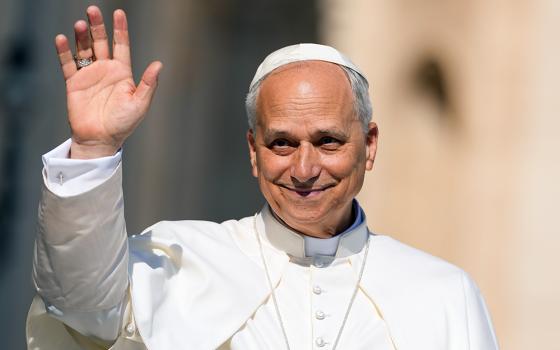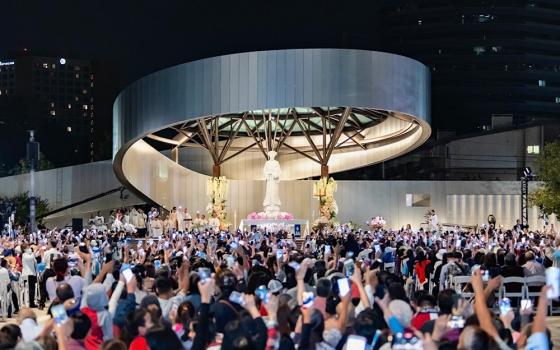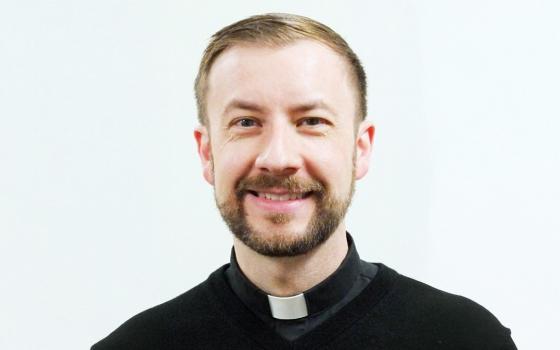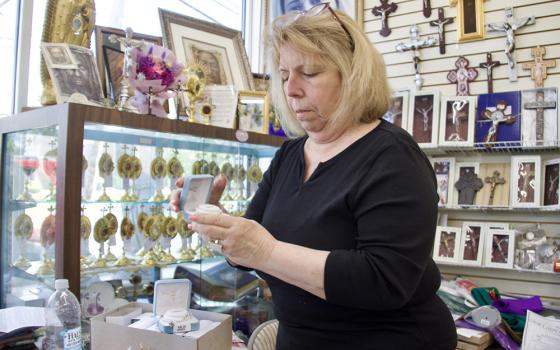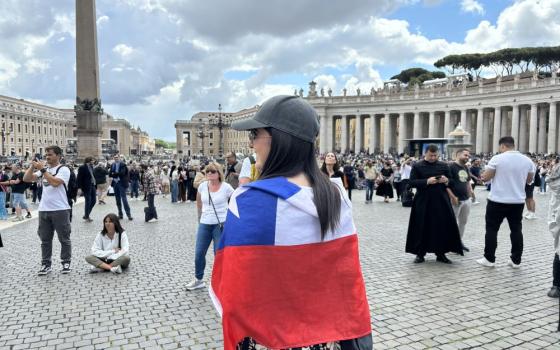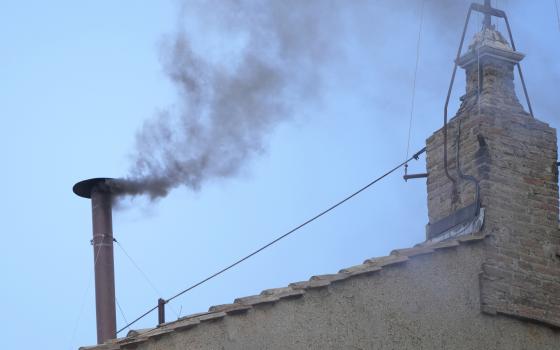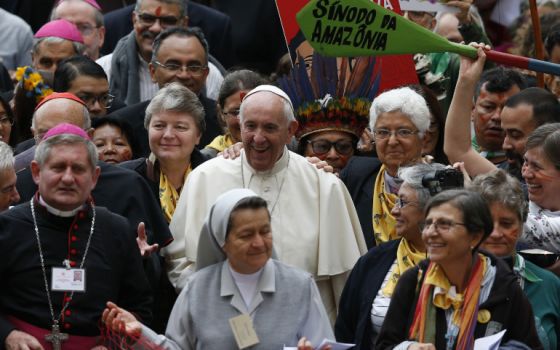
Cardinals from around the world pray in the Sistine Chapel at the Vatican March 12, 2013, before beginning the conclave to elect a successor to Pope Benedict XVI. The following day, on the fifth ballot, they elected Cardinal Jorge Mario Bergoglio of Buenos Aires, Argentina, who chose the name Francis. (CNS/Vatican Media)
For those of you tuning in late, there will be a conclave starting Wednesday, May 7, to elect the new pope. In the past week, there has been a lot of speculation in the press about which candidate is up and which is down, but it is clear that this is a wide-open conclave and no one really knows how it will turn out.
My columns have steered clear of the horse race and instead focused on some of the deeper issues, and insights drawn from history to make sense of this secretive and momentous event.
Last Monday (April 28), I offered an overview of the conclave. All conclaves are, in a sense, a referendum on the pope who just died and, in this case, Pope Francis left some big shoes to fill. He casts a long and happy shadow.
Tuesday, I exploded the myth that "he who enters a conclave a pope, comes out a cardinal" and provided a quick analysis of what the history of the conclaves of the last 100 years tells us about this year's conclave.
"What does the church need in a new pope?" was the question posed on Wednesday, sketching some of the reforms Francis began and how the cardinals may choose a person with a view to pursuing those reforms or reining them in.
Thursday, we asked a different, but related, question: "What does the world need from a new pope?" Ours is a fraught time with authoritarian regimes challenging human rights and social justice. It is more than a little ironic that a pope is one of the last of the absolute monarchies in the world, and may be the only person with the moral and spiritual authority to challenge authoritarianism.
The role of personalities, assessing the character of the different candidates, was the focus of my column on Friday. The cardinals will be selecting a pope, not a platform, and any pope's ability to connect with the people of God is a large part of the job description in a global media environment.
Finally, today's (May 5) column looks at the internal dynamic of the different conclaves in the past century, how the cardinals see the choice emerging in different voting patterns. I conclude that the 2025 conclave is most like that of 1958 in many ways.
Advertisement

